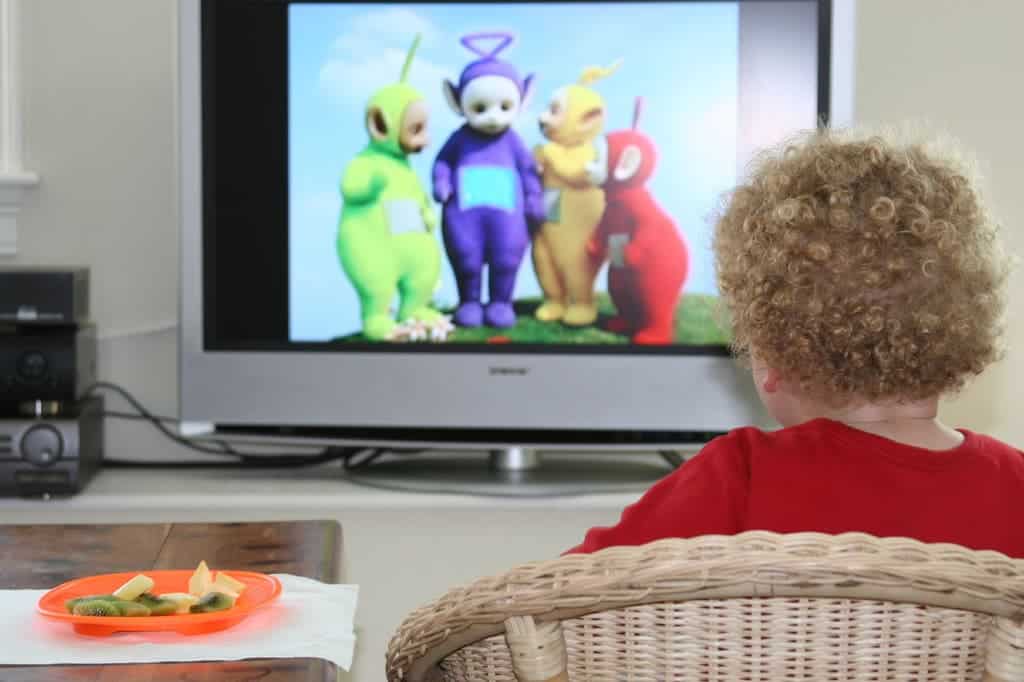Although children do not have much, if any money, they are still influential buyers. They can very persuasive through their words, and, perhaps even more effective, by screaming at the top of their lungs. Although arguably unethical, many companies take advantage of this persuasive and gullible target group to direct ads. By creating a new TV monitoring system, a research team in Australia was able to analyze thousands of advertisements and found that ads promoting junk food were most common during times of the day when the most children are watching television.
The study was led by the University of Adelaide’s Associate Professor Lisa Smithers, and published today in the Journal of Paediatrics and Child Health. The researchers designed a special system comprising a digital television tuner attached to a computer. It allowed an entire year of television and ads to be recorded from a commercial TV network in South Australia that have four channels.

Thirty thousand hours of television were recorded, including more than 500 hours of food advertisements. In total, this amounted to almost 100,000 food ads. The Australian Guide to Healthy Eating was used to classify each type of food as healthy or unhealthy. Snacks, crumbed/battered meat, fast food and sugary drinks were among the most advertised food.
Children who watched an average of 80 minutes of television each day would view more than 800 ads in a single year. During peak child viewing hours, the frequency and length of junk food ads was twice as much as that for healthy food. The type of ads changes with the season, with junk food ads making up 71% of all food ads in January and only 41% in August.
“Diet-related problems are the leading cause of disease in Australia, and the World Health Organization has concluded that food marketing influences the types of foods that children prefer to eat, ask their parents for, and ultimately consume,” said Dr. Smithers.
Australia, like many countries, has many children and adults suffering from obesity and other diet-related health issues. Healthy habits, including eating well, start early, and aggressive junk food advertising can upend these goals. Currently, Australia has only voluntary codes to control the types of food advertising promoted on television.
“I believe this is a conversation for the Australian public. We can see from what’s happening in other countries that there are many different options in place, such as only advertising foods that meet nutritional criteria or showing a healthy eating message when unhealthy foods are advertised. The UK is talking about a 9 PM watershed. The results of three surveys and two citizens’ juries indicate that there is support for protecting children from advertising, so it would seem that the public are, generally, on board,” said Dr. Smithers to ZME Science.
The researchers involved with the study advocate for stronger regulation of advertisements. They hope that Australia will join the ranks of countries such as Canada (Quebec), which has completely banned advertisements to children, Norway, which bans junk food ads, and France, which requires the promotion of healthy eating when junk food is advertised. A study done in Quebec after the ban found that the number of fast food meals eaten in the province per year decreased by a whopping 11 million to 22 million. Indeed, children are a vulnerable group that are not aware that what is promoted on TV is actually detrimental to their health. As such, advertising to children, especially of unhealthy or dangerous products, should simply be banned.
Journal reference: Smithers et al. 2018. Food advertising on Australian television: Frequency, duration and monthly pattern of advertising from a commercial network (four channels) for the entire 2016. Journal of Paediatrics and Child Health. https://doi.org/10.1111/jpc.13929


